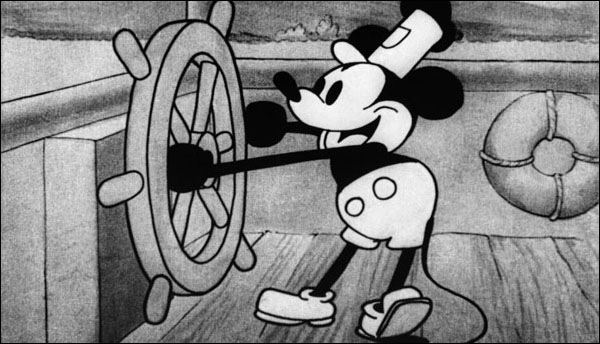The animated featurette was made at a challenging time for the Walt Disney Studios - when they needed a hit.


This December marks the 180th anniversary of Charles Dickens’ novel A Christmas Carol. When it was first published on December 19th, 1843, Dickens could have never foreseen what his story would become almost two centuries later.
A Christmas Carol was written during a challenging time for Dickens. His previous novel, Martin Chuzzlewit, had not performed well, and he needed a hit. He got that and much more, creating a story that has lived on for generations and inspired innumerable film versions.
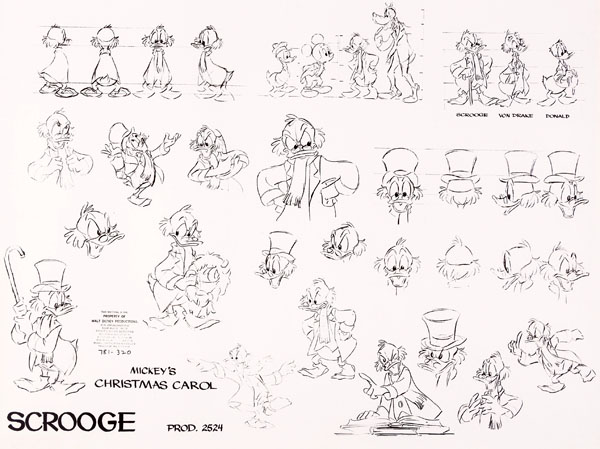
This December also marks an anniversary for one of those film versions: the 40th anniversary of Mickey’s Christmas Carol. In somewhat of a parallel story to Dickens’ A Christmas Carol, the animated featurette was made at a challenging time for the Walt Disney Studios, when they needed a hit.
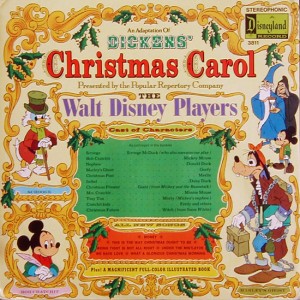 Like the original story itself, the artists behind Mickey’s Christmas Carol probably hoped but could have never predicted that their short film would not only become a beloved version of Dickens’ story, but it would also become a perennial favorite of the season.
Like the original story itself, the artists behind Mickey’s Christmas Carol probably hoped but could have never predicted that their short film would not only become a beloved version of Dickens’ story, but it would also become a perennial favorite of the season.
It wasn’t just the original 1843 work that inspired Mickey’s Christmas Carol, but a 1974 record album, as well. The Disneyland storybook record album, A Christmas Carol, presented by the Popular Repertory Company of The Walt Disney Players, contained some casting choices that differed from the film. Merlin, from The Sword in the Stone, played The Ghost of Christmas Past, the Old Hag from Snow White was the Ghost of Christmas Yet to Be, and Honest John and Gideon from Pinocchio played the two gentlemen who solicit funds for the poor. Additionally, the record album was a musical containing several songs. For more on the album, check out Greg Ehrbar’s article.
Artist Mike Peraza provided the beautiful layouts for Mickey’s Christmas Carol. He noted in his blog that it was director Burny Mattinson who brought the record album to then Disney CEO Ron Miller, as a potential project for the studio.
At the helm for Mickey’s Christmas Carol, Mattinson did so much to shepherd the project and inspire the team of artists to create a carefully crafted short film that’s become a classic.
Sadly, we lost Burny Mattinson, a Disney Legend, earlier this year. He was the longest-serving employee of The Walt Disney Company, where he worked from 1953 to 2023. He appeared in this year’s short film Once Upon a Studio, celebrating 100 years of Disney, which is a fitting legacy to the eight decades of memories he brought to audiences.
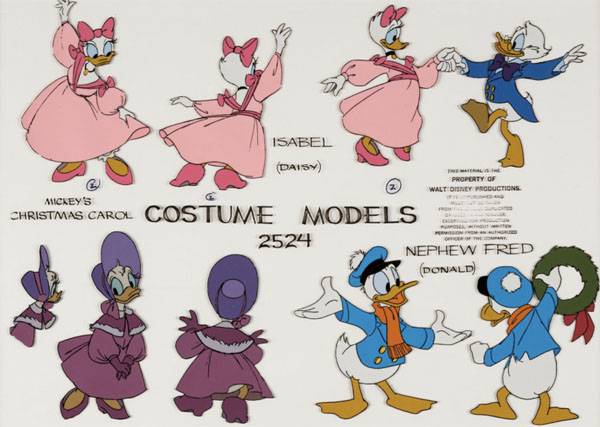
Part of this is, without a doubt, Mickey’s Christmas Carol, which opens with the familiar “sunburst” image of Mickey’s classic face that opened so many of the Disney Studio’s most famous short films. This time, however, Mickey is wearing Bob Cratchit’s hat and scarf.
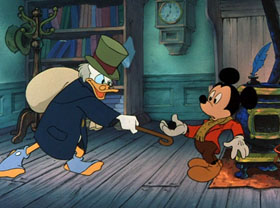 We then segue into the opening credits, which have the warmth and look of pages from a Victorian book, like Dickens’ original. Mike Peraza brought these lovely, evocative images to the screen. The artist also created similar, additional images when Mickey’s Christmas Carol aired on NBC in 1984 as an hour-long special with classic Disney Christmas shorts balancing the time.
We then segue into the opening credits, which have the warmth and look of pages from a Victorian book, like Dickens’ original. Mike Peraza brought these lovely, evocative images to the screen. The artist also created similar, additional images when Mickey’s Christmas Carol aired on NBC in 1984 as an hour-long special with classic Disney Christmas shorts balancing the time.
The singable and memorable song “Oh What a Merry Christmas Day,” by Frederick Searles and Irwin Kostal, plays over the opening credits, cordially welcoming audiences to the story and perfectly setting the tone for the featurette.
What follows is a story familiar to all, even those who’ve never even heard of what being boiled in their own plum pudding is: Miser Ebeneezer Scrooge (Scrooge McDuck), who acts horribly toward his overworked employee, Bob Cratchit (played by Mickey Mouse, in his first appearance on movie screens since 1953’s The Simple Things), his nephew Fred (Donald Duck), and essentially the entire world, is visited on Christmas Eve by the ghost of his deceased partner, Jacob Marley (Goofy).
That night, as promised by Marley, Scrooge is called on by the Ghosts of Christmas Past (Jiminy Cricket), Present (Willie the Giant), and Yet to Come (Pete), who provide warnings that Scrooge needs to mend his ways. Spoilers – he does, and Tiny Tim (Mickey’s nephew Morty) exclaims the iconic line, “God bless us, everyone.”
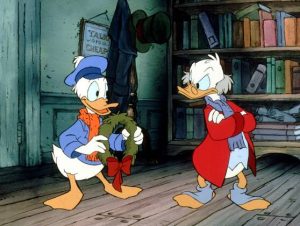 What’s so wonderful about Mickey’s Christmas Carol, and what sets it apart from the other innumerable versions of the tale, is that it feels both very Dickensian and very Disney. The characters all play a part but also stay true to their personality.
What’s so wonderful about Mickey’s Christmas Carol, and what sets it apart from the other innumerable versions of the tale, is that it feels both very Dickensian and very Disney. The characters all play a part but also stay true to their personality.
Examples of this are Goofy, very spirit-like as Marley, but he also manages to be very Goofy-like as he tumbles down the stairs with his trademark “holler” (“Yah-hoo-hoo-hoo-ee!”). Also, Jiminy comes complete with an “Official Ghost of Christmas Past,” medal which mimics his “Official Conscience” medal from Pinocchio, and Willie the Giant tromps through the street and uses a streetlamp like a flashlight.
In addition to the leading players, there are also supporting roles from several familiar Disney players, such as Rat and Mole from the Wind in the Willows section of Ichabod and Mr. Toad, as the solicitors, Daisy Duck as Scrooge’s past love, Isabelle, and Minnie Mouse as Mrs. Cratchit.
Also, there are plenty of fun, blink-and-you-miss-them, cameos throughout, including The Three Little Pigs as street corner carolers, The Big Bad Wolf as a sidewalk Santa, and Mr. Toad as Fezzywig, in a scene that’s a veritable party of Disney cameos.
The partygoers include Chip and Dale, Huey, Dewey and Louie, Clarabelle Cow, Horace Horsecollar, Angus McBadger (Wind in the Willows), Lady Kluck (Robin Hood), the Secretary Bird (Bednobs and Broomsticks) and Clara Cluck, just to name a few.
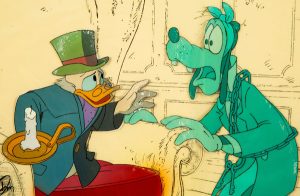 In the final scenes of Mickey’s Christmas Carol, there are a number of additional cameos, and you’ll also spot The Wind in the Willows’ Cyril Proudbottom, as Nephew Fred’s horse, Skippy the Rabbit and Toby Tortoise from Robin Hood and the Three Little Wolves.
In the final scenes of Mickey’s Christmas Carol, there are a number of additional cameos, and you’ll also spot The Wind in the Willows’ Cyril Proudbottom, as Nephew Fred’s horse, Skippy the Rabbit and Toby Tortoise from Robin Hood and the Three Little Wolves.
These characters were brought back to the screen by a team of animators, including many who would become architects of Disney’s animation renaissance in the 1990s, such as Mark Henn, Glen Keane, Dale Baer, and Randy Cartwright, among others.
One of the characters returning to the screen was Scrooge McDuck in only his second appearance in movies. His other film was the 1967 short subject Scrooge McDuck and Money. The character of Scrooge had been created for Disney comic books by the immensely imaginative Disney Legend artist Carl Barks. Scrooge first appeared in 1947 in the story Christmas on Bear Mountain – and was first animated as part of the opening of The Mickey Mouse Club in 1955.
In Mickey’s Christmas Carol, Scrooge McDuck is voiced by actor Alan Young, most famous for his role as Wilbur on the iconic 1960s sitcom Mr. Ed. Young came to be involved in Disney’s featurette through a happenstance, as he remembered in the documentary, The Making of Mickey’s Christmas Carol.
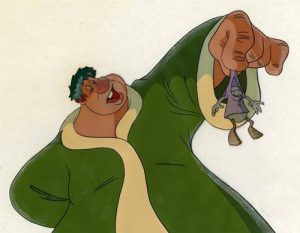 Young was helping a friend rehearse some lines, and when he started reading the script, he realized he had co-written it. As it turns out, Young was a co-author of the Disneyland record version of Christmas Carol with the Disney Players.
Young was helping a friend rehearse some lines, and when he started reading the script, he realized he had co-written it. As it turns out, Young was a co-author of the Disneyland record version of Christmas Carol with the Disney Players.
From here, Young contacted Disney about voicing Scrooge in Mickey’s Christmas Carol, which began a four-decade stint of the actor being the official voice of the character, most notably in the original, popular DuckTales TV series.
The voice cast in Mickey’s Christmas Carol also included Wayne Allwine, who would provide the voice of Mickey for 32 years, and with this featurette, he was voicing him for the first time on movie screens. Actor Hal Smith, known for many voice-over performances and TV appearances, including his role as Otis, the town drunk on The Andy Griffith Show, was the voice of Goofy.
The multi-talented voice acting genius Will Ryan was both Willie the Giant and Pete, and Clarence “Ducky” Nash, the first voice of Donald Duck, marked his last performance as the character before his death in 1984.
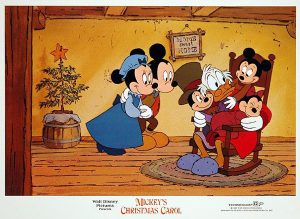 Mickey’s Christmas Carol was released on December 16, 1983, as part of a double feature with a re-issue of 1977’s feature, The Rescuers.
Mickey’s Christmas Carol was released on December 16, 1983, as part of a double feature with a re-issue of 1977’s feature, The Rescuers.
In the spring of 1984, the featurette was nominated for the Best Animated Short Oscar but lost to the stop-motion short Sundae in New York.
One year after its release, the film was released on VHS and shown on NBC that December. In the four decades since its initial debut, this little film based on one of the world’s most famous stories has become more beloved than ever.
Mickey’s Christmas Carol, like Charles Dickens’ original work that inspired it, has rightly earned its place as part of the fabric of our holiday seasons.



